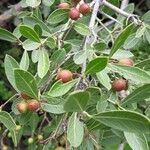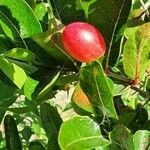| Therapeutic use
|
Leprosy (bark), Anorexia (fruit), Anticonvulsants (fruit), Antipruritics (fruit), Antipyretics (fruit), Antirheumatic agents (fruit), Aphrodisiacs (fruit), Appetite stimulants (fruit), Astringents (fruit), Bites and stings (fruit), Demulcents (fruit), Diarrhea (fruit), Diet, food, and nutrition (fruit), Digestive system diseases (fruit), Edema (fruit), Epilepsy (fruit), Fever (fruit), Hemiplegia (fruit), Mental disorders (fruit), Pain (fruit), Postnatal care (fruit), Scabies (fruit), Scurvy (fruit), Skin diseases (fruit), Thirst (fruit), Wounds and injuries (fruit), Cooling effect on body (fruit), Antifungal agents (leaf), Fever (leaf), Hypotension (leaf), Anthelmintics (root), Antipruritics (root), Appetite stimulants (root), Cardiotonic agents (root), Cardiovascular agents (root), Cathartics (root), Diabetic foot (root), Dysentery (root), Exanthema (root), Gangrene (root), Histamine release (root), Hypertension (root), Hypotension (root), Intestinal diseases, parasitic (root), Scabies (root), Scurvy (root), Stomach diseases (root), Ulcer (root), Urinary tract infections (root), Urologic diseases (root), Wounds and injuries (root), Dysentery (seed), Insect repellents (seed), Pruritus (seed), Snake bites (seed), Sprains and strains (seed), Insecticides (stem), Bite(Dog) (unspecified), Collapse (unspecified), Dropsy (unspecified), Epilepsy (unspecified), Hemiplegia (unspecified), Madness (unspecified), Malaria (unspecified), Post-Natal (unspecified), Rheumatism (unspecified), Vermifuge (unspecified), Rabies (unspecified), Scurvy (unspecified), Stomachic (unspecified), Convulsion (unspecified), Sore (unspecified), Anasarca (unspecified), Anorexia (unspecified), Anticonvulsants (unspecified), Antineoplastic agents (unspecified), Antirheumatic agents (unspecified), Appetite stimulants (unspecified), Edema (unspecified), Fever (unspecified), Mental disorders (unspecified), Postnatal care (unspecified), Scabies (unspecified), Wounds and injuries (unspecified), Anti-bacterial agents (whole plant excluding root)
|









